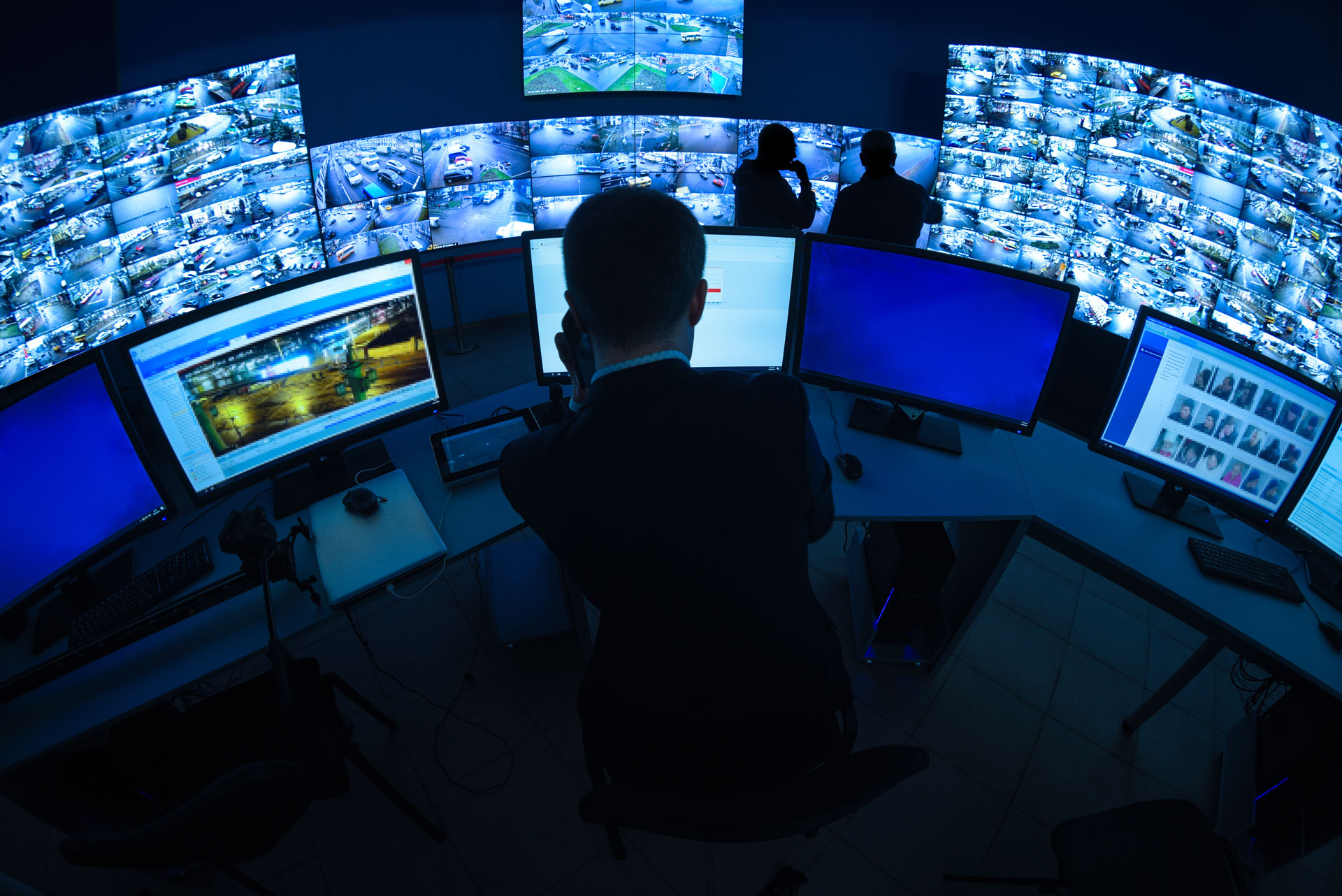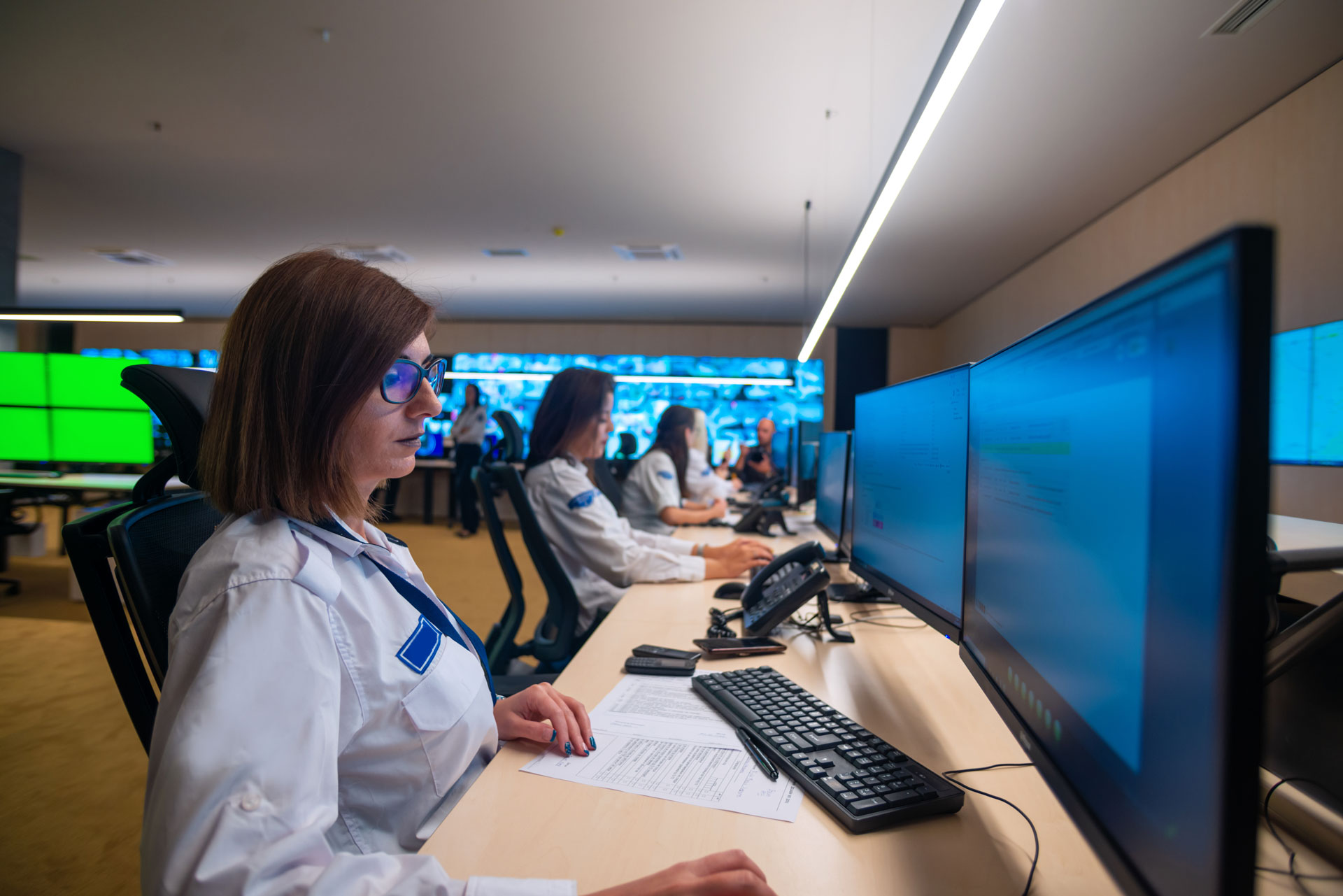Monitoring
Monitoring: Active, Retroactive, and Intrusion Response
How Does Proactive Video (CCTV) Monitoring Work?
While the technology behind proactive video monitoring is complex, the way it prevents potential crimes is easy to understand:
- A potential threat approaches the perimeter of your asset, site, building or property.
- This threatening, or non threating activity is picked up by the intelligent surveillance technology, and decision are made by humans.
- This alert is sent within seconds to one of our Intervention Specialists stationed in a state-of-the-art monitoring center, and redundant.
- They then visually assess the threat over a live video feed, this takes training and skill, not to mention human oversight.
- The intruder is deterred by our Intervention Specialist with a live, personalized audio warning (Audio is recommended).
- This live audio warning deters 90-99% of intruders but in some cases, local authorities will be called to the location.
- Two way radio or emergency dispatch can be utilized in some scenarios.
- Proactive video monitoring takes action before a crime or otherwise poor judgment activiity is committed.
- It uses intelligent video analytics to identify potential threats and intervenes in the event of unauthorized activity on your property or site.
Customizations:
- Proactive monitoring systems can be armed and disarmed for specific types of activity and certain times of the day. This is especially useful for
- business owners because it allows them the control to set the system to arm outside of business hours.
Burglar, Fire, and Alarm Monitoring – Central Station
Alarm monitoring is quick and detailed communication between your security system and the central station of your security provider, this is often a rate you can shop with OSA. Your control panel registers an emergency event and sends a signal to the central monitoring station, where the appropriate authorities are notified and sent to your home. This dispatch can take minutes or longer due to the nature of calls in the area in which you are located, and the distance from the nearest first responder or authorities.
The technical specifics may be slightly different for each security provider, but the basics of alarm monitoring is similar in any home or commercial security system. Your system control panel is the center of a network of sensors, which may include window or door sensors, motion detectors, tamper sensors , or specialized temperature, flood, and smoke detectors. When your system is armed and any of these sensors are triggered, a signal is sent to the monitoring station-typically via your telephone line, network and although some alarm monitoring systems also offer alternate or backup transmission options. OSA almost always installs a backup for your system, and each service is monitored separately, fire or intrusion, also known as burglar alarm.
The first signal sent by your control panel will alert monitoring personnel at the central station, who will call to notify you and confirm whether it’s a real emergency or a false trigger. If you don’t respond, the alarm monitoring service contacts the proper agency to dispatch emergency personnel to your address, which is a common setup. Some security systems offer additional features, such as immediate alarms, which don’t depend upon a confirmation call or silent alarms that don’t alert intruders and give them a chance to disable the system before the follow-up signal is sent. It is important to know you have a solid partnership for these types of monitoring, your life or someone else’s, an employee or guests, could depend on it.
Managed Services – Monitoring Information Technology:
Your IT system requires regular patching and upgrades, and needs ongoing maintenance to ensure all the elements integrate correctly, securely, and function as they should. Proactive monitoring handles all of this, so you don’t have to. When maintenance is required, it’s performed after your work hours to avoid disruptions to your workflow.
With Proactive Monitoring, you’ll benefit From knowing the best technicians and customer service reps are on the case.
Overwatch of your infrastructure and electronics, devices and hardware is a key component of safety and risk mitigation.
- Improved reliability, speed and efficiency.
- Longer life for your IT assets for a better ROI.
- Remote Troubleshooting when you have technology issues.
- Remote Upgrades as soon as they are released.
- Real-Time Reports about the health of your IT infrastructure.
- Increased security for your computers, network, and data infrastructure
- Remote Patch Management as soon as patches are released
- Help with software, and live bodies or chat to work with.


